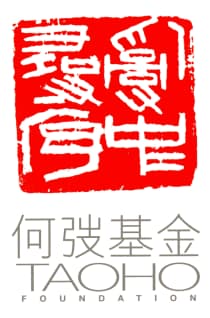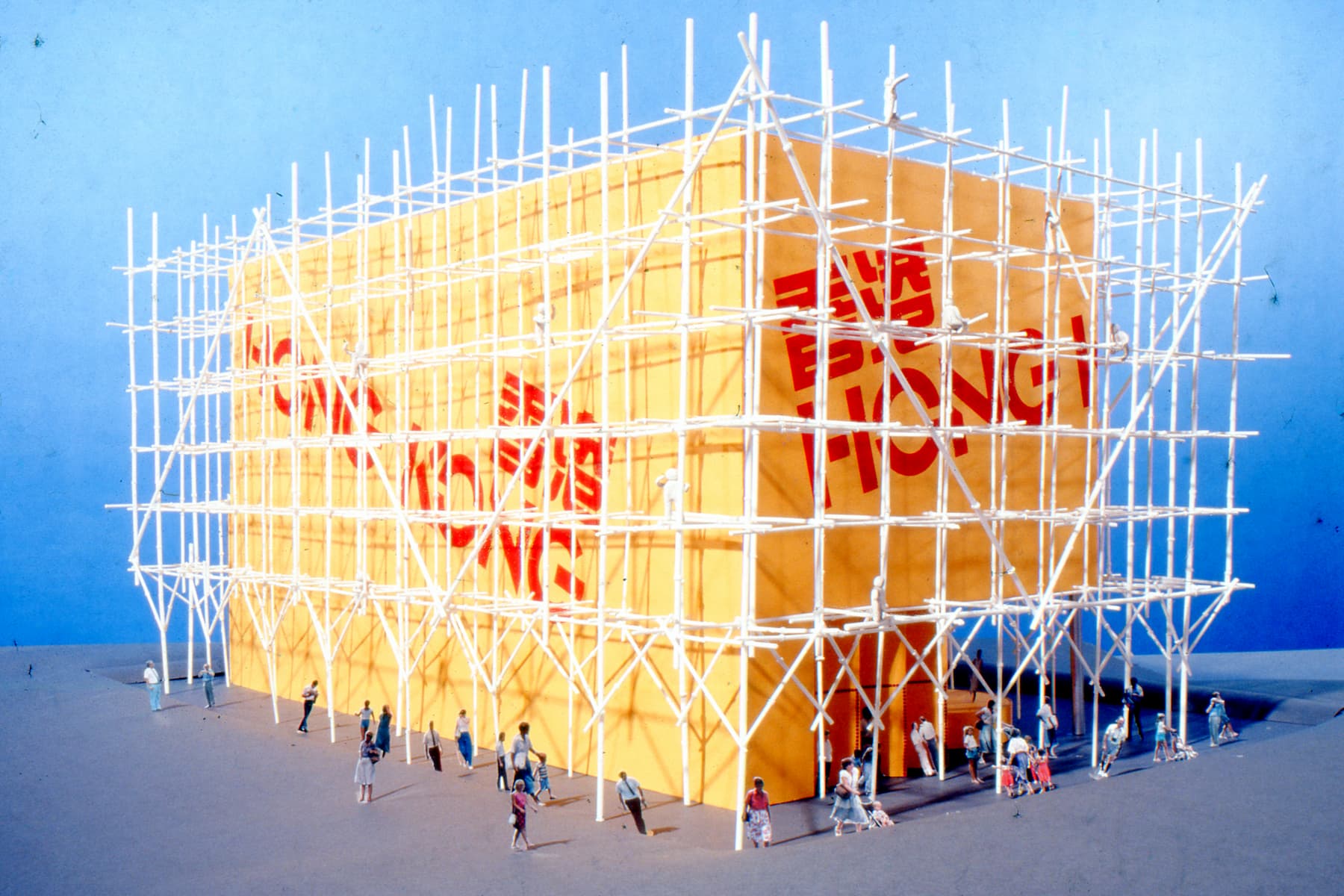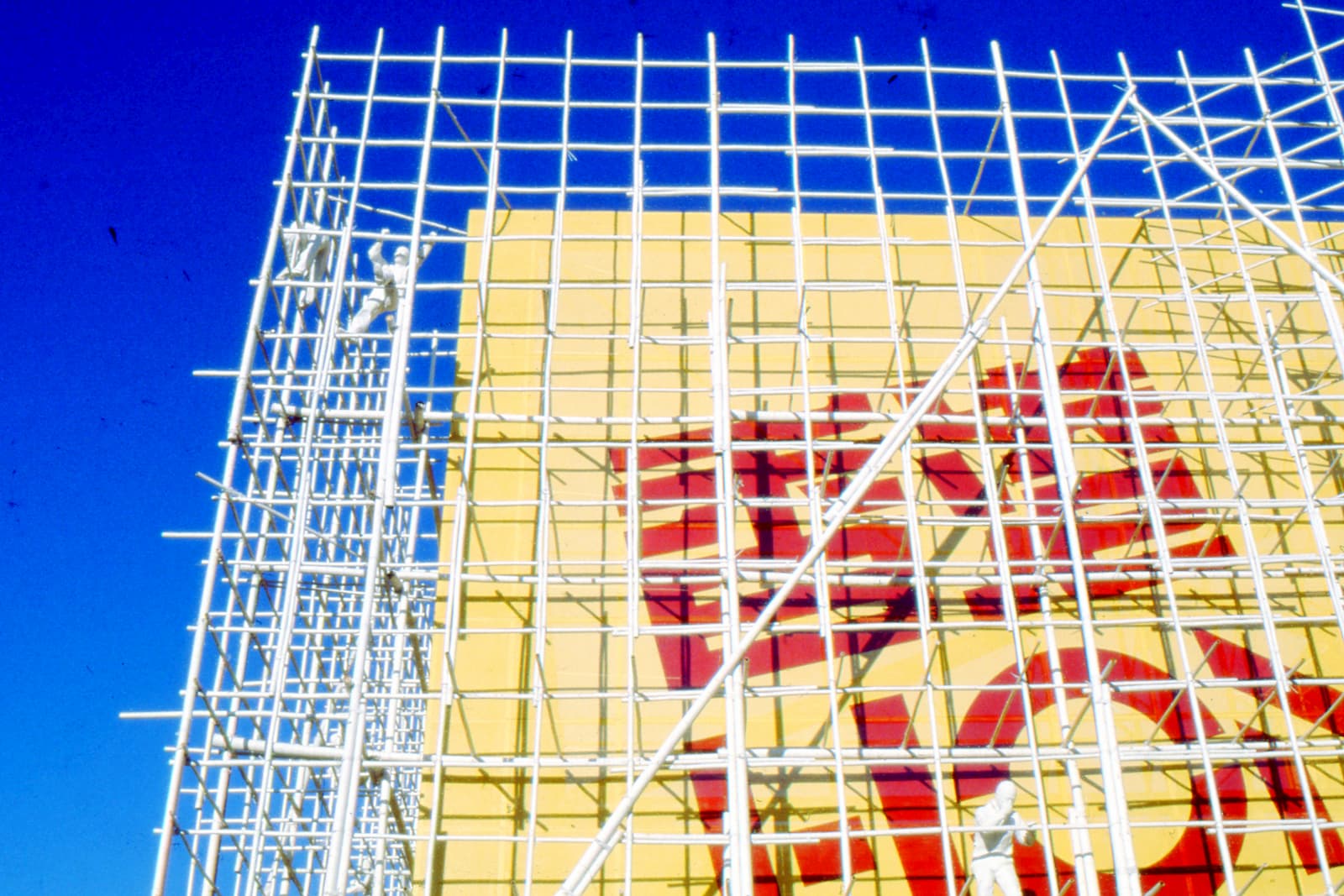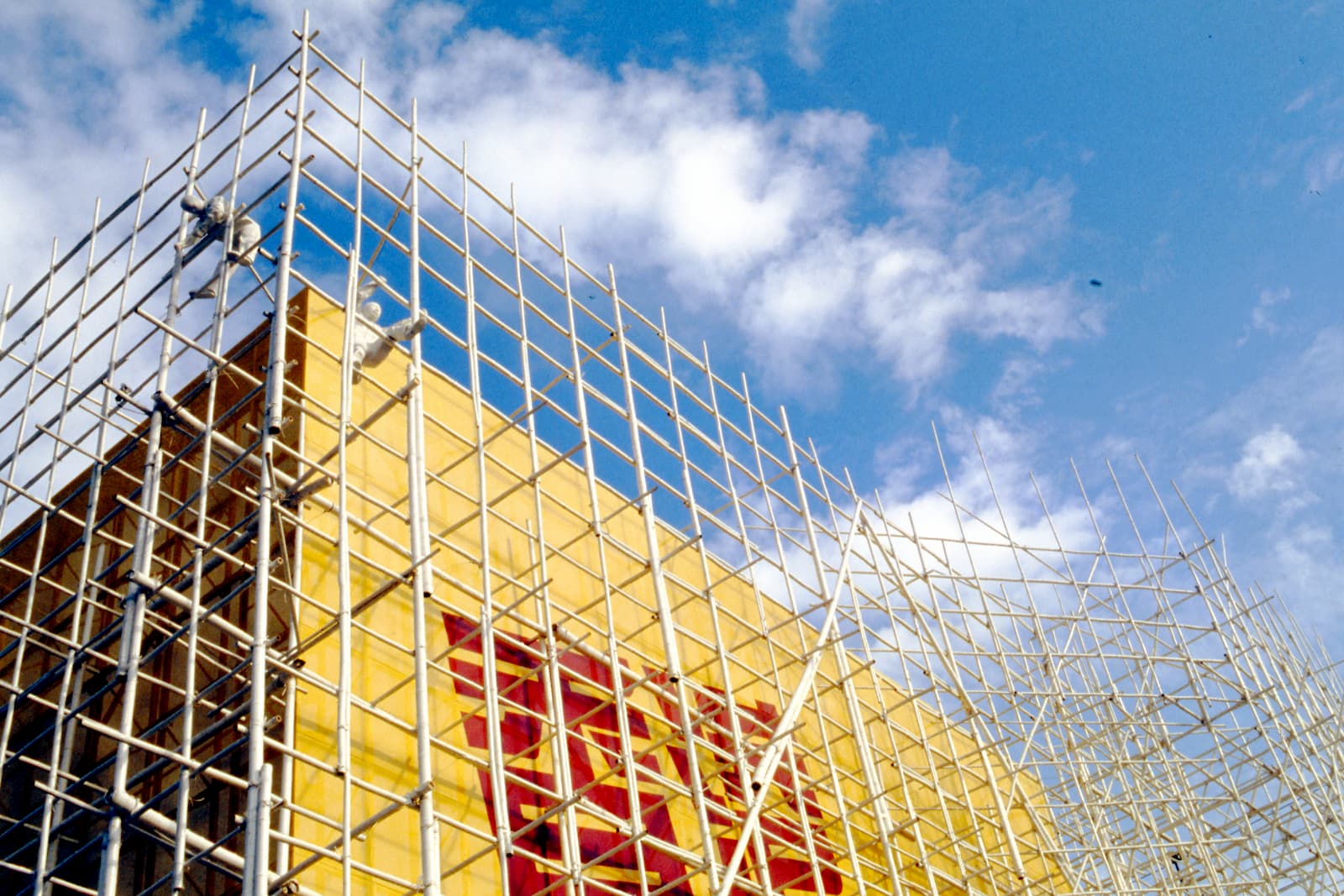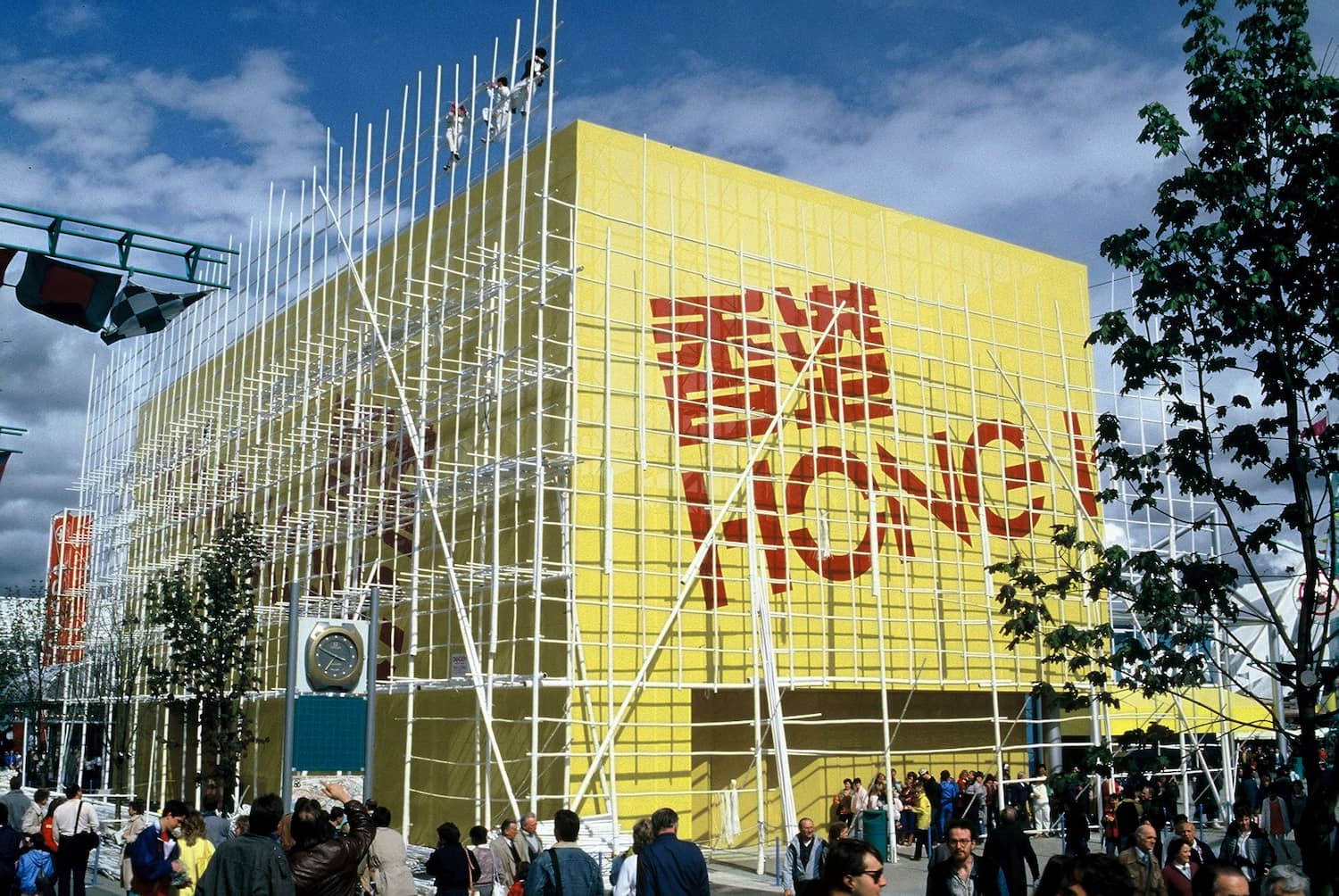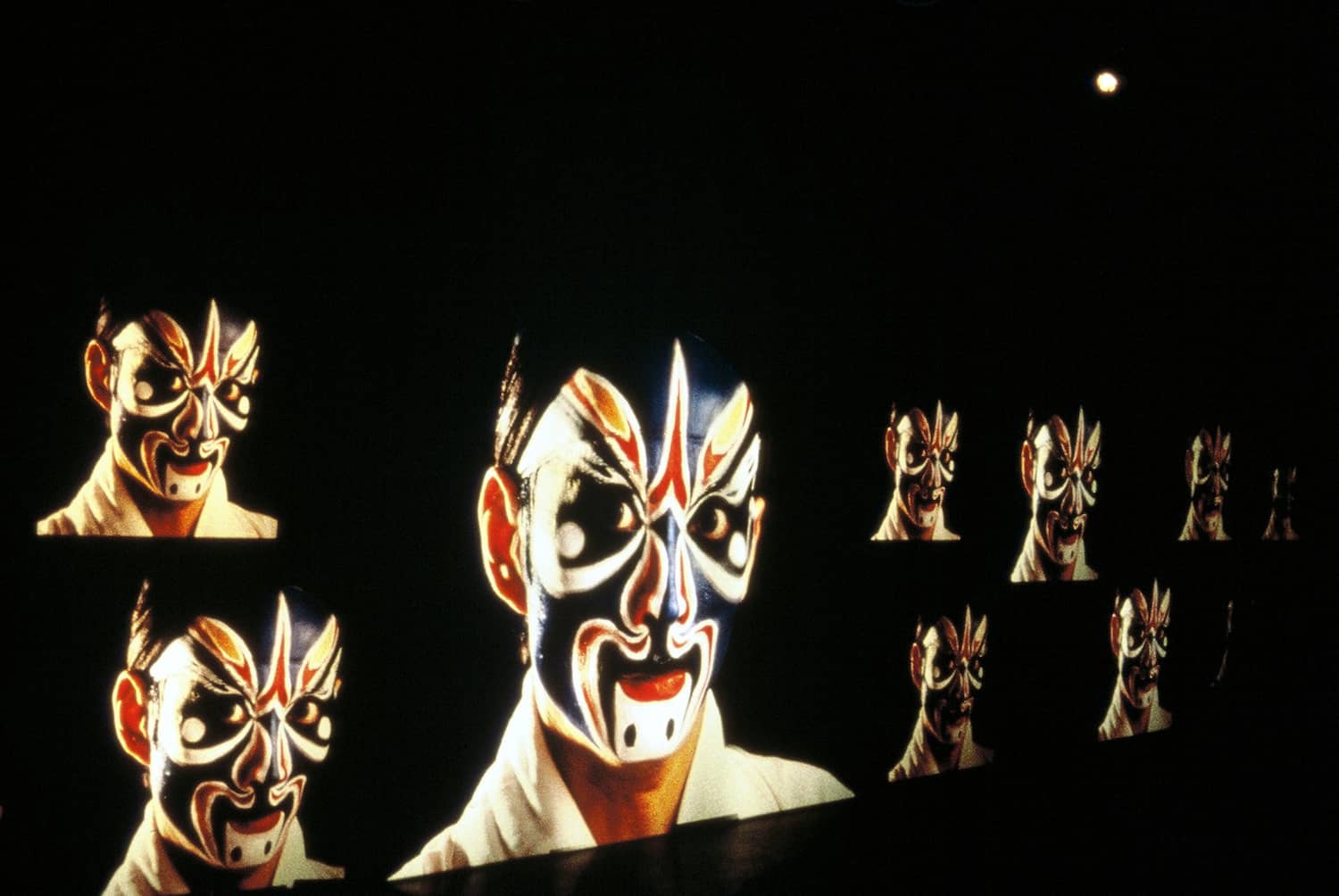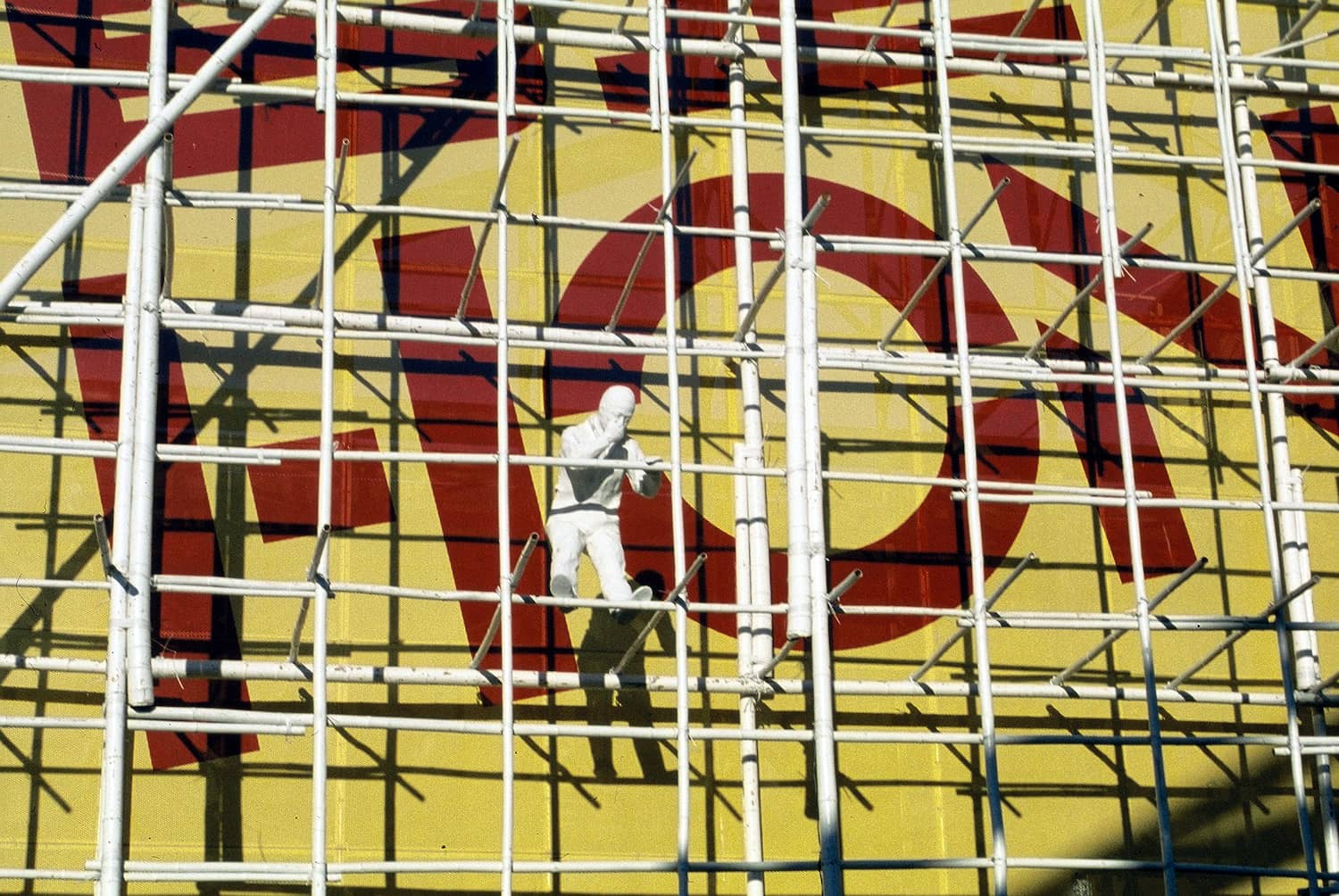Hong Kong Pavilion at Expo ’86
Vancouver, Canada, 1986.
Since the days of Mies Van Der Rohe’s German Pavilion, some of the world’s most interesting and experimental architecture has been at the quadrennial world expositions where every nation constructs a temporary architectural space that serves as a showpiece of its creative talent. In this tradition, we were commissioned to design the Hong Kong Pavilion at the 1986 World Exposition in Vancouver.
To express the dynamic nature of Hong Kong, the pavilion is a box-shaped structure, with its exterior walls encased in a grid of bamboo, the most familiar building scaffolding used in Hong Kong. This invokes Hong Kong’s vitality, rapid development into an international economic powerhouse, and its democratic energy. The grid, painted white, sharply contrasts with the exterior walls, which are made of bright yellow high-tech metallic panels. This dynamic interplay suggests that traditional and native building methods can and should co-exist within the world of contemporary architecture. To more clearly transplant the experience of walking in the shadow of Hong Kong scaffolding to Vancouver, life size models of construction workers are placed on the grid. Inside the pavilion is an open performance space framed by galleries featuring works by Hong Kong artists.
Through architecture, this temporary exhibition space successfully conveyed Hong Kong’s creative identity to a global audience.
